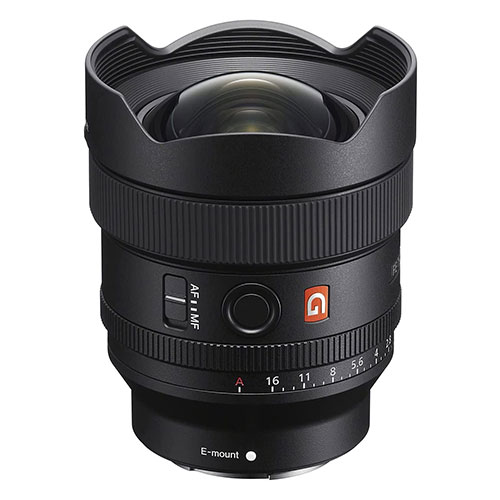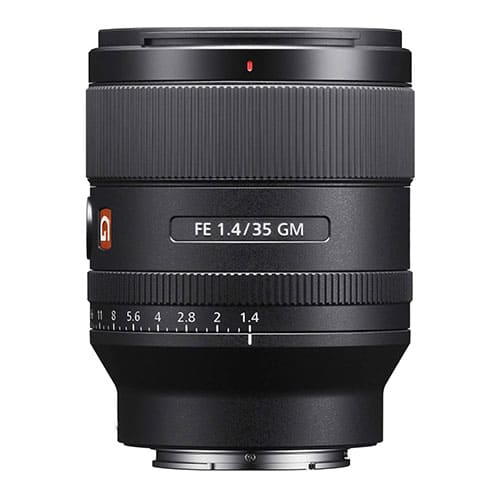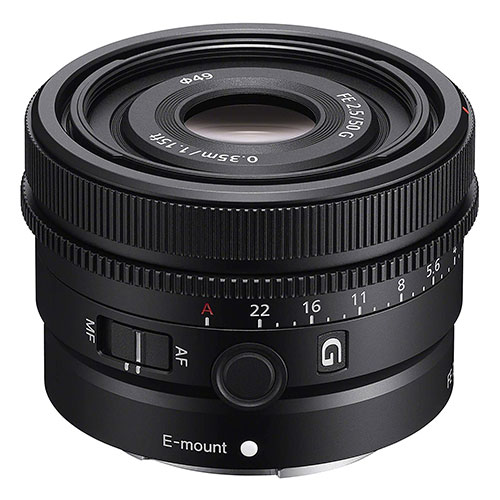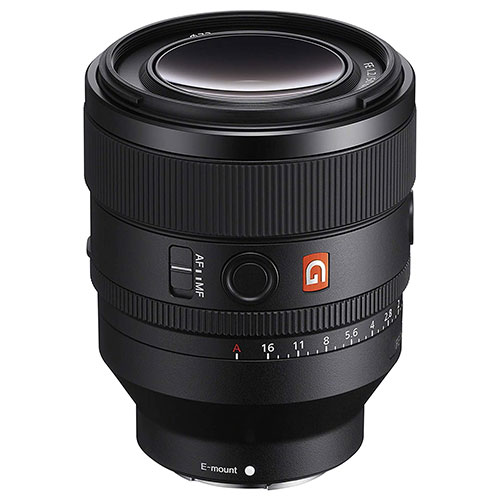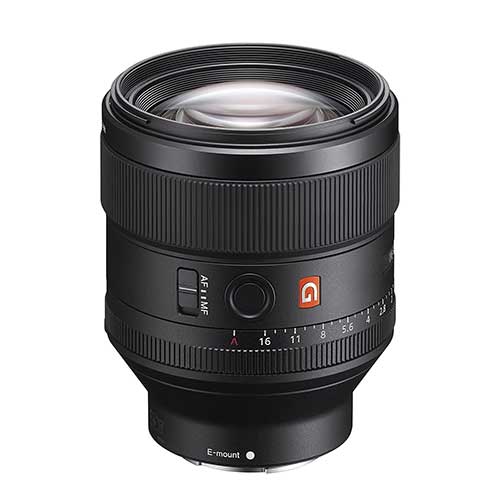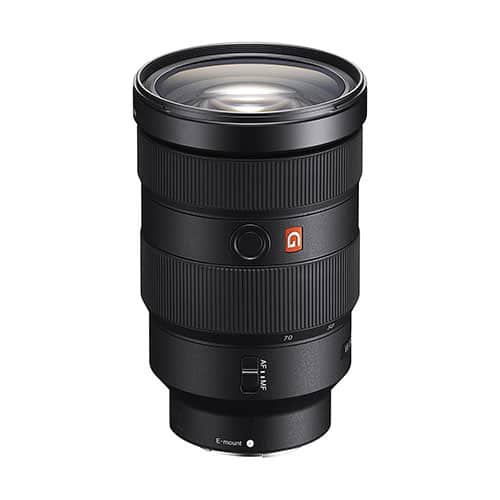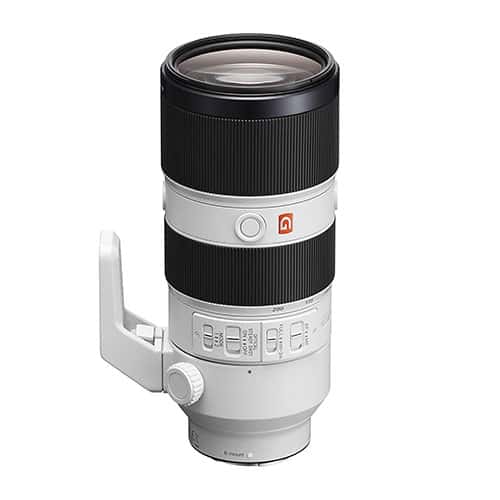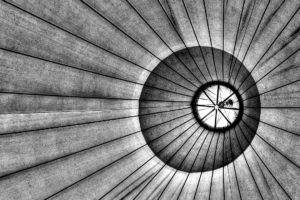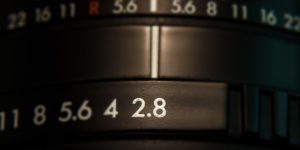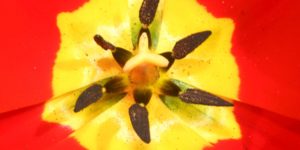Although its predecessor, the a7III, was already a very impressive beast, the Sony a7IV looks to have made this popular photographic powerhouse somewhat obsolete – after only a few years on the market.
In fact, while the a7IV is priced a little higher than the previous model was at launch, you get a whole lot more for your money.
Pretty much every specification has been improved in some way when compared with the a7III. And this goes from the most basic and fundamental elements such as sensor resolution and autofocus performance through to video capabilities and even the viewfinder.
Personally I’m most excited about the new 33MP sensor (the a7III was just 24MP). In practice this will lead to improved low-light capabilities and all-round greater image detail.
Meanwhile, the new lossless RAW compression will be very handy too, as it means being able to shoot many more high resolution images before running out of either card space or buffer.
But it’s got to be said that the improvements to the AF system are also very welcome. In particular the new eye-tracking capabilities; although eye and face detection were already available on the a7III, they came in a somewhat hobbled form. This has been fixed.
And the a7IV’s new real-time tracking mode works brilliantly, on both humans and other animals – even when shooting video.
Clearly, though, in order to get the most out of these – and numerous other – improvements offered by the a7IV, you’ll need to couple the body with suitably high-specced glass.
Wondering which are the best Sony a7IV lenses available right now? In this guide I review my favorite native Sony glass for the a7IV – from wide to tele, and including recommendations for both fixed and prime solutions.
Best Wide Angle Lenses for the Sony a7IV
Sony FE 14mm f/1.8 GM
One of the most obvious uses for a lens this wide, particularly one that comes with such a fast maximum aperture, is of course going to be astrophotography.
And while the lack of mechanical manual focus will deter a few night sky photographers, this is true for all native Sony Mirrorless lenses.
For most photographers though, the Sony 14mm f/1.8 GM will make an excellent tool for shooting the Milky Way and other heavenly bodies.
But of course, also for much more besides.
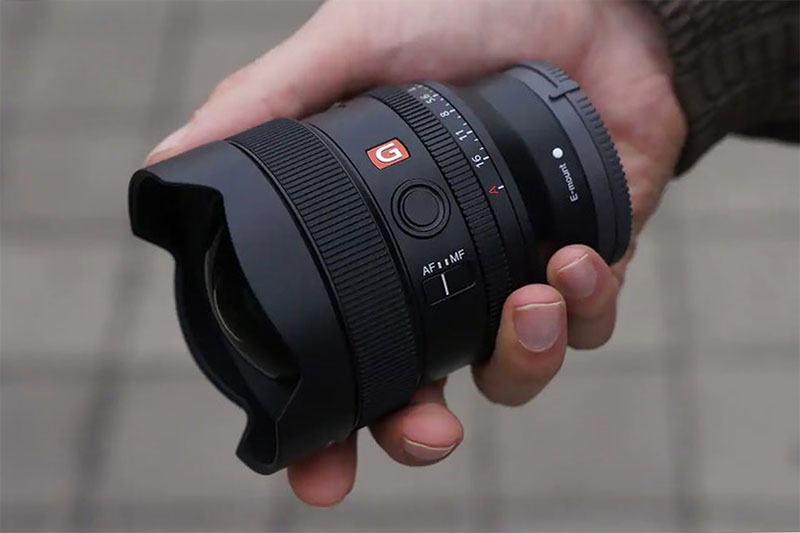
The lens is extremely compact and lightweight for one offering such a wide angle of view. And it also comes weather-sealed at the mount and elsewhere.
Clearly, then, it would also make an excellent lens for landscape photographers looking to keep weight down – but without compromising on durability – as they trek into unforgiving terrain.
Image sharpness is very impressive, even when the lens is used wide open. And the already great performance here even improves slightly – in terms of both sharpness and contrast – as you stop the aperture down.
Color fringing is pretty much nonexistent, but there is a tiny amount of vignetting and barrel distortion. However, these latter issues are easy enough to correct digitally anyway.
Although you can focus pretty close, don’t expect too much bokeh action from a lens this wide. If you do manage to achieve a shallow depth of field, though, rest assured that the bokeh will be highly pleasing to the eye.
Autofocus performance is excellent, and works consistently well when tracking moving subjects. It’s also totally silent, so the lens makes a good choice for videographers.
Nonetheless, a minor annoyance is that the 14mm’s bulging front element means that you can’t use it with regular filters.
Although be aware that good third party solutions to this problem do exist. However, I can see that this won’t be of much consolation if you already own a full set of perfectly good filters of the threaded variety.
Despite this, though, I believe that those looking for a native ultrawide angle lens for the Sony a7IV will likely be very happy with the 14mm f/1.8 GM.
Indeed, from what I’ve seen so far, every one these G Master lenses is excellent, so there are no major surprises here.
Sony FE 35mm f/1.4 GM
Ultrawides certainly have their legitimate uses – at least occasionally. But unless you solely shoot astrophotography, you’ll likely want to go with something a little more moderate for general day to day shooting.
Take the rather excellent Sony FE 35mm f/1.4 GM for example.
If you were forced to choose just a single prime lens for everyday use, this might well be top of your list.
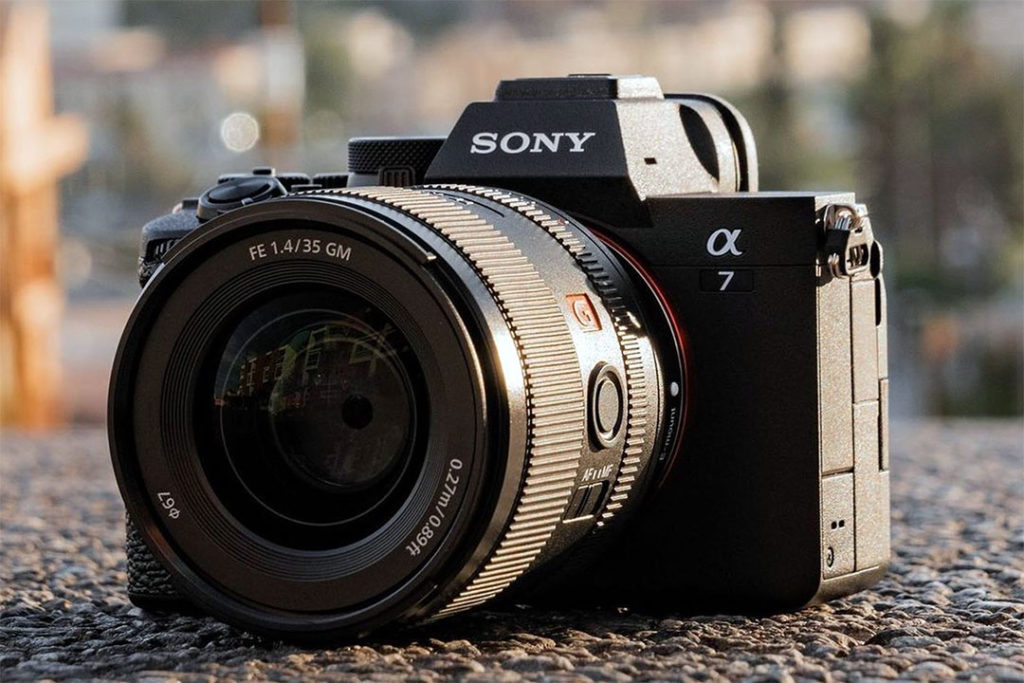
And rightly so. As not only is the 35mm f/1.4 GM supremely fast, but it’s also one of the sharpest moderate wide angles out there right now – for any system.
Even at f/1.4, images made with this lens are beautifully crisp, detailed, and contrasty. And that goes for the corners pretty much to the same degree as the center of the frame. And as is often the way, this performance gets even better as you stop down, too.
True, when turning off the a7IV’s in-camera corrections, there is a very noticeable amount of vignetting, and also a degree of pincushion distortion. The moral of this story being; keep in-camera corrections on. Simple!
AF is fast, accurate, and totally silent. So you’ll have no reason for complaint here. And as with many of these top end Sony lenses, the aperture ring can be de-clicked. These features combined also make the FE 35mm f/1.4 GM a good choice for video work.
The lens is small and lightweight. And despite being made of engineered plastic it nonetheless feels solid and well built. In any case, the lens mount is metal, and there is weather sealing at the gasket.
There is no image stabilization unfortunately, though. But otherwise this lens is pretty much perfect, and will make an excellent partner for the a7IV.
Best 50mm Lenses for the Sony a7IV
Sony FE 50mm f/2.5 G
Small, lightweight, and well built, the Sony FE 50mm f/2.5 G makes an almost equally strong contender for the role of primary walk-about lens as the 35mm f/1.4 (above).
50mm is just wide enough to deal with most outdoor scenes – as long as you’re willing to use your legs – but not so wide as to leave your subject floating in a sea of unnecessary distractions.
Which tends to be the noob’s most common compositional error.
At f/2.5, it’s not the fastest standard prime in Sony’s current E-mount roster. But it will be plenty fast enough for most photographers most of the time.
Build quality is excellent. In fact, on this front at least, I can find little indication that the 50mm f/2.5 is of inferior quality to the much more expensive Sony GM lenses.
Indeed, construction is metal, and the lens comes fully weather sealed. What more could anyone could ask for?
Also in common with the GM, the aperture ring can either be set to provide clear clicks for stills, or adjust smoothly and continuously for when shooting video.
Autofocus is great, too; performing both quickly and accurately. And AF operation is totally silent – another plus for videographers.
All good so far. But what about image quality?
Well, I’m pleased to report that we continue in the same positive vein here, too,. In fact this lens consistently delivers excellent optical performance.
Wide open, the center of the image is super sharp. And while the corners perform just a tad less impressively, the difference is minor.
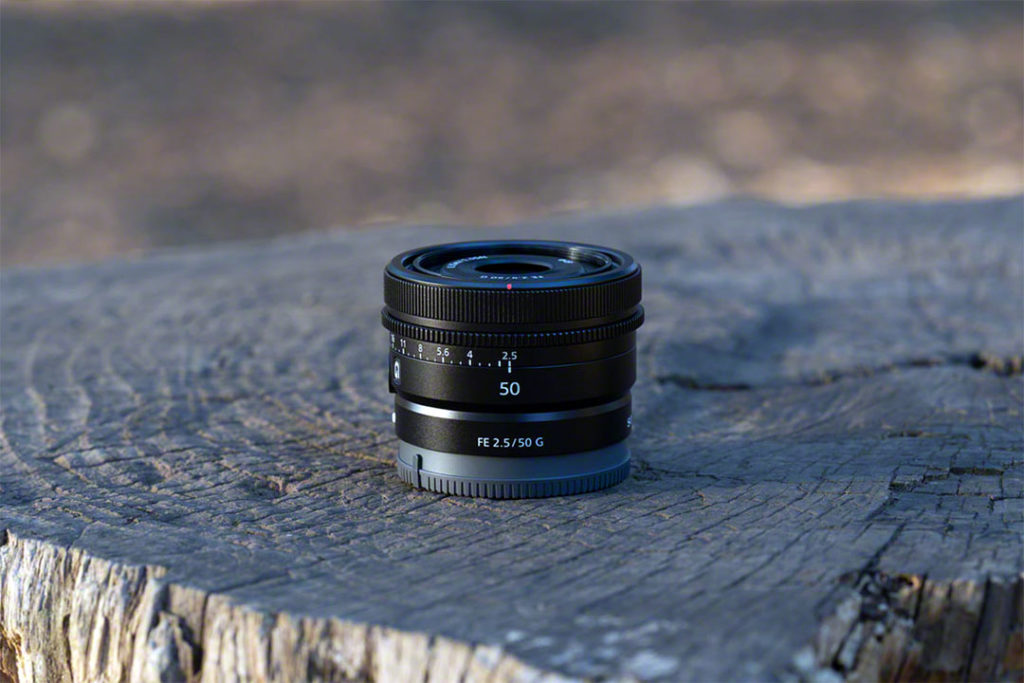
Certainly any compositional iconoclasts in the habit of placing their subjects close to the edge of the frame will not be frustrated by the 50mm f/2.5 G’s optical abilities.
Out of focus rendering is overall very pretty indeed. But be aware that “bokeh balls” are not perfectly round, instead displaying a notable degree of angularity.
And this despite Sony billing the lens as having curved aperture blades. Personally, though, I don’t find this to be a major turn off.
Finally, chromatic aberrations are minimal, and there’s not a great deal in the way of flare either. Good work Sony!
All things considered, then, this is a great little 50mm lens. And while it doesn’t quite achieve the same heights, or offer the same fast aperture, as the 50mm G Master version (below), it’s really not far off. Meanwhile, the price is considerably lower. You decide!
Sony FE 50mm f/1.2 GM
The FE 50mm f/1.2 GM is Sony’s premium level standard lens. Premium and standard in the same sentence?
Yes. Not only does this bit of glass deliver brilliantly on pretty much every front, but it also comes at a premium price.
So what do you get for your money that other 50mm lenses can’t provide?
Well, as you might hope with such an expensive lens, build quality is very solid indeed.
Although perhaps no more so than with the 50mm f/2.5 (above).
And interestingly the two lenses also appear to have received the same degree of weather sealing.
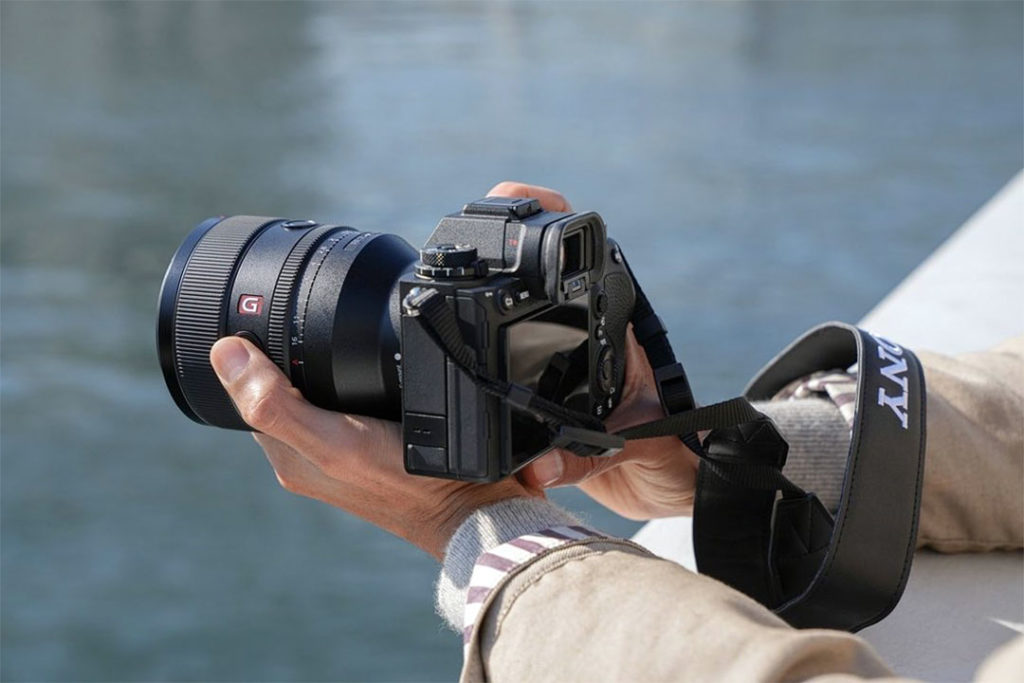
However, that the build quality of the two lenses is so comparable is perhaps more a reflection of how much of a bargain the f/2.5 lens is than it is a criticism of the f/1.2 GM model.
Autofocus, too is excellent. And this lens coupled with the superior eye-detect and tracking abilities of the Alpha 7 IV body will undoubtedly be extremely impressive indeed.
And as with the cheaper 50mm, there is also the option to de-click the aperture ring for video.
Moving on to image quality now, and frankly it’s outstanding.
But again, so are the optics of the cheaper f/2.5 model.
Rest assured, though, that if you do go for this lens you will not be disappointed with the quality of the images it produces. They are sharp as a tack from edge to edge. Even at the widest apertures.
Yes, there’s a touch of vignetting and pincushion distortion. And also a degree of color fringing – ironically, the cheaper lens actually performs a little better here. But there’s ultimately nothing of real concern.
Where there is some difference in image quality when compared to the 50mm f/2.5, however, is with regards to out of focus rendering. As background lights result in much smoother and less angular bokeh balls when using the G Master.
In fact, while I really like the bokeh produced by the f/2.5 lens, objectively the f/1.2 wins out here by a margin – not only due to the shallower depth of field that the faster aperture can produce, but also simply in terms of aesthetic qualities.
Let’s be totally clear, though. This is a great lens. But so is the 50mm f/2.5. And aside from a very noticeable jump in price, the only significant practical difference between the two (without splitting hairs) is the maximum aperture. Oh, and that the G Master is a lot bigger and heavier.
Over three times the cost, for a couple of extra stops of light and some unnecessary weight in your bag?
I appreciate that for some photographers – those who shoot natural light portraits, for example – the price may well be worth paying. For many, however, it will not.
Don’t let me discourage you though if you really do need the faster aperture. This is undoubtedly a fantastic piece of glass. Hence why I’ve included it here.
Whether it’s worth the extra investment to you personally, however, is a question you’ll need to answer for yourself.
Best Telephoto Lens for the Sony a7IV
Sony FE 85mm f/1.4 GM
If you’ve been paying close attention so far, you’ll likely have noticed that all the lenses I’ve recommended here are very sturdily built.
That is of course part of the reason why I recommend them.
And if you’re even more attentive, you may also have registered that nearly all of these lenses are part of Sony’s premium-quality G Master range.
These two facts are not entirely coincidental; the GM lenses are expensive, but as they are clearly built to last, they are likely to be a good investment over time.
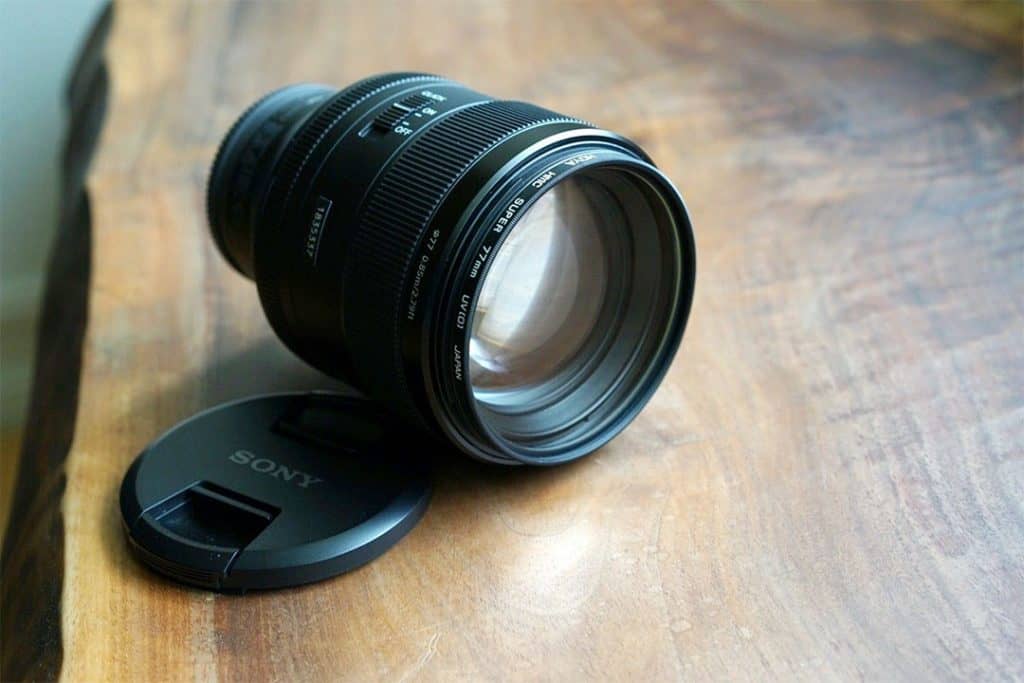
The Sony FE 85mm f/1.4 GM is no exception. Despite the barrel being made from high-grade plastic, rather than military-grade metal, this thing really is built like a tank.
What’s more, the metal mounting ring does come with a degree of weather sealing. And in any case engineered plastic does seem to be the standard now, even for most top of the range camera lenses.
Sure, the lens is also pretty big and heavy. But not excessively so, and it balances well on a camera like the a7IV.
However, it should be said that this probably doesn’t rank among the best of the G Master lenses in terms of autofocus – likely due to the amount of heavy glass that’s sitting inside the barrel. But AF nonetheless works well enough, providing accurate – if not exactly snappy – focus tracking in most situations.
Videographers should be warned, though, that here is a little noise detectable from the focus motors.
Also, while I’m listing the faults, I should mention that there’s no image stabilization either.
So that’s the bad – or at least somewhat mediocre – news out of the way.
The good news? Firstly, with its f/1.4 aperture, this lens both lets in a lot of light and at the same time allows for some very blurred backgrounds.
Perhaps more importantly, image quality on this thing is fantastic, from edge to edge. And even at f/1.4 there’s no sign of fuzziness or nasty color fringing in the corners.
True, the edges don’t quite achieve their maximum potential until you stop down to f/2. At which point, though, this thing is pretty much optically perfect in every way. Amazing stuff!
Now, as most people will be interested in this lens for shooting portraits, we also need to consider how it renders out of focus areas of the image.
The honest answer here is “quite well.”
I raved about this lens’s bokeh when I first discovered it. But having lived with it a little longer, I think that although the bokeh is fairly attractive, it’s not quite as amazing as I initially thought. Although to a degree this depends on the subject.
If you were hoping for something more along the lines of “incredible background blur” or “buttery bokeh balls,” This may come as something of a disappointment. Nonetheless, I think that performance here will be plenty good enough for most of us.
And realistically, if viewers of your photos frequently criticize the quality of your backgrounds, you might want to put a little more effort into the foregrounds before considering trading in a perfectly good lens for a bonafide bokeh machine.
Indeed, nobody ever won a photography award for good bokeh. Meanwhile countless prize-winning shots have totally uninspiring backgrounds, but for obvious reason nobody ever pays the slightest bit of attention to that part of the image.
Make of that what you will!
Best Zoom Lenses for the Sony a7IV
The Sony FE 24-70mm f/2.8 is certainly not cheap, but those who can afford the asking price are unlikely to be dissatisfied with what they get in return for all their dinero.
Zooms aren’t traditionally known for either their exceptional sharpness nor fast maximum apertures.
But the 24-70mm f/2.8 goes a long way towards busting this myth.
Sure, f/2.8 isn’t as fast as you’d get if you went for a handful of primes instead. But the FE 24-70mm is no tortoise.
And it will permit you to pull a very usable image out of the majority of shooting situations.
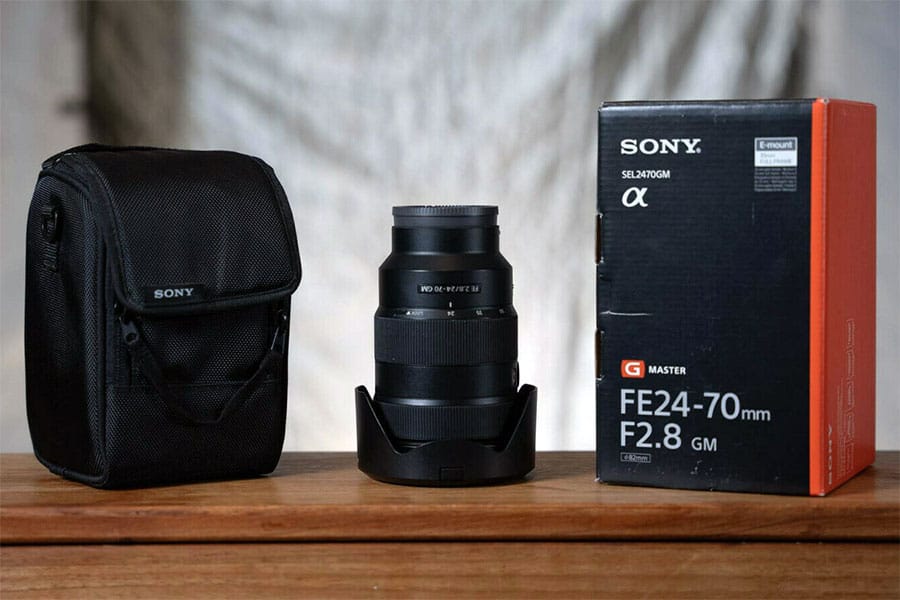
Meanwhile, image quality is actually very good indeed. With excellent central sharpness even at f/2.8. Yes, there’s a slight drop in bite towards the corners when the lens is used at this aperture setting.
But it’s relatively minor. And shutting down the diaphragm even by a stop will rectify most of this.
Color and contrast are also very impressive, and out of focus details are consistently rendered smoothly and without distraction.
In fact the only optical issues worthy of mention are a touch of color fringing, and some vignetting when shooting wide open. But that’s it.
Autofocus is fast and accurate. And it’s also near-silent; so videographers will have little complain about.
I suppose that if I wanted to be ultra-critical, I could bemoan the size and weight of this thing. But realistically, expecting such an impressive feat of optical engineering to be much smaller or lighter than this would, quite frankly, be rather naive.
In short, this is a great lens; don’t hesitate!
Sony FE 70-200mm f/2.8 GM OSS II
By now those of you of a more nervous disposition likely start running the moment you see me listing yet another G Master lens. And yes, I know, they will not be within every photographer’s budget.
But the fact is, if you’ve splashed out on a camera as sophisticated – and as costly – as the Sony a7IV, you would be doing yourself a real disservice if you pair that camera with substandard glass.
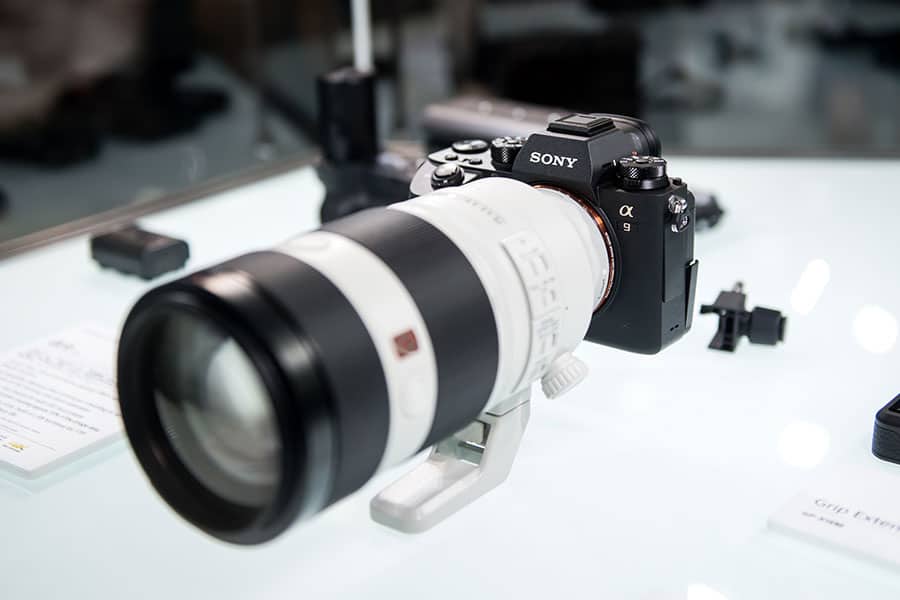
It’s also true that not everybody loves zooms. But as we’ve already seen, these Sony GM lenses really are something special. And as with the 24-70mm offering above, this GM will have all your old anti-zoom prejudices hastily making their excuses and heading for the door.
In any case, though, if you’re looking for a native Sony lens for the a7IV in a focal length longer than 135mm, a zoom is the only way that you’re going to achieve this right now. The brand has yet to add any primes longer than this to its line up.
So, what do you get for your money if you do splash out on the FE 70-200mm f/2.8 GM OSS II?
A lot. Not least of all great image quality.
In fact, shooting at the widest zoom setting with the aperture wide open, center sharpness is superb, while the edges lag just a little further behind. Stop down slightly, though, and even the corners look great.
And it’s a similar story at the opposite end of the zoom range, too, with the center beautifully sharp, and the edges catching up once you stop down to around f/5.6.
Bokeh is certainly soft, and backgrounds on close-up shots such as portraits and wildlife photography tend to look great. Although be aware that bokeh balls can take on a cat’s eye form towards the edges when the lens is used wide open.
Thankfully though, due to some nicely rounded aperture blades, I see no sign of any angular, polygonal shapes when shooting distant lights etc.
There’s very little in the way of either flare or ghosting, but you will see a touch of distortion at longer zoom settings. Nothing that can’t easily be corrected in-camera though.
Autofocus, meanwhile, is astonishingly quick. Indeed, AF is among the fastest of any similar lenses right now. It also locks onto fast-moving subjects with ease, and sticks with them. Barely missing a single frame even when shooting rapid bursts.
Despite its size, the 70-200mm GM is actually very lightweight. In fact considerably lighter than the MK I version of the lens. Nonetheless, its build is extremely rugged, comes with weather sealing, and all in all inspires total confidence in the lens’s ability to endure even the roughest of professional treatment.
Obviously, then, this lens comes highly recommended. But as an alternative, for those who don’t need its fast maximum aperture but instead tend to shoot under bright sunshine or using strobes, something like the 70-200 mm f/4 G OSS would also be a great option.
It’s also considerably cheaper.
Alternatively, the first iteration of the this lens has been significantly discounted since the MK II version came on the scene. Just keep in mind that quite a lot has changed in the interim – particularly regarding image sharpness – and in practice it might be unwise to look upon the two as variations of the same lens.
Still, some photographers may be very happy to live with the limitations of the earlier model in return for a not inconsiderable cash saving.
Resources
A7IV Specifications
| Body type | SLR-style mirrorless |
|---|---|
| Max resolution | 7008 x 4672 |
| Effective pixels | 33 megapixels |
| Sensor size | Full frame (35.6 x 23.8 mm) |
| Sensor type | BSI-CMOS |
| ISO | Auto, 100-51200 (expands to 50-204800) |
| Lens mount | Sony E |
| Focal length mult. | 1× |
| Articulated LCD | Fully articulated |
| Screen size | 3″ |
| Screen dots | 1,036,800 |
| Max shutter speed | 1/8000 sec |
| Format | MPEG-4, XAVC S, XAVC HS, XAVC S-I, H.264, H.265 |
| Storage types | One CFexpress Type A/UHS-II SD, One UHS-II SD |
| USB | USB 3.2 Gen 2 (10 GBit/sec) |
| Weight (inc. batteries) | 659 g (1.45 lb / 23.25 oz) |
| Dimensions | 131 x 96 x 80 mm (5.16 x 3.78 x 3.15″) |
| GPS | None |
Links
Final Thoughts
The a7IV looks set to establish new standards for what we can expect from Sony’s full frame Mirrorless cameras – if not Mirrorless cameras more generally.
But as powerful a photographic tool as the Alpha 7 IV undoubtedly is, the old rule still applies; a camera is only as good as the glass sitting in front of it.
Thankfully, though, Sony also offers some similarly incredible lenses. And while few of them could be considered cheap, in balance most represent good value in terms of what you actually get for your money.
Certainly, if your budget can stretch to the excellent G Master series, it would be difficult to go too far wrong. Just keep in mind that, occasionally at least, Sony’s cheaper alternatives don’t lag too far behind its top of the range models in terms of optics and performance.
That’s very much the case when it comes to the excellent 50mm f/2.5 lens I review above. But there are also other hidden gems within the Sony E-mount range.
Which Sony lenses would you recommend for use with the a7IV? Are you sticking only to G Master glass? Or have you had good results with some of the cheaper Sony optics? I’d love to hear about your experiences in the comments!


